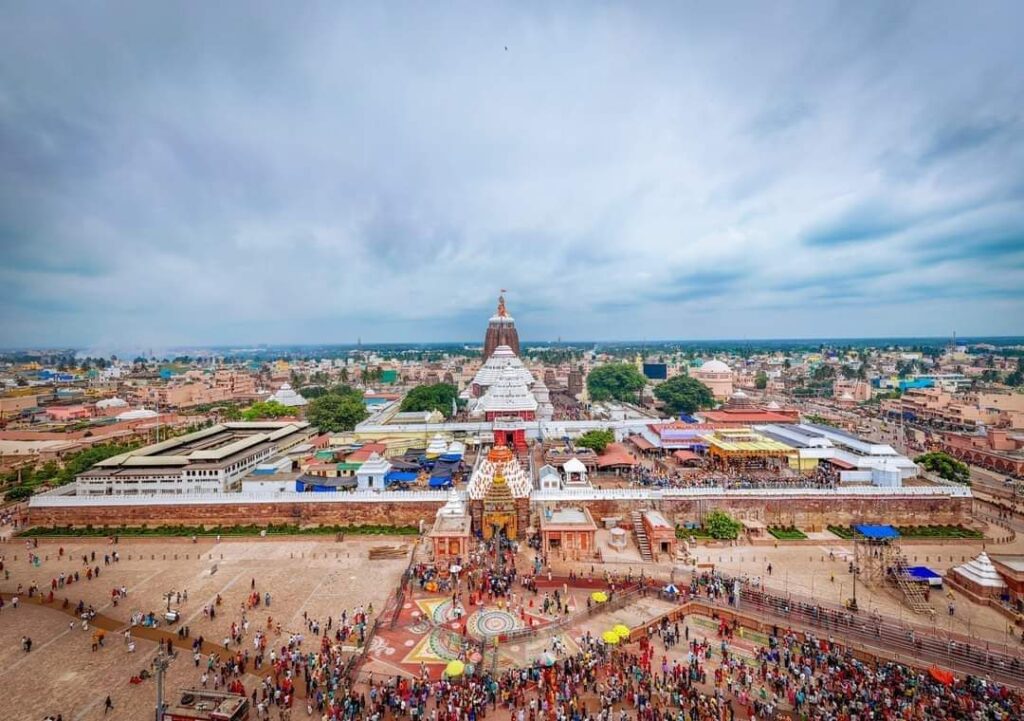In the sacred city of Puri, Odisha, the grand festival of Snana Purnima marks an auspicious occasion in the Hindu calendar. This festival, celebrated with great fervor and devotion, signifies the ceremonial bathing of Lord Jagannath, his brother Balabhadra, and sister Subhadra. This ritual is a precursor to the world-renowned Rath Yatra, and it draws thousands of devotees from far and wide, all eager to witness the divine spectacle.As the day of Snana Purnima dawns, the atmosphere in Puri is charged with excitement and spiritual energy. Devotees, dressed in traditional attire, throng the Jagannath Temple, their hearts filled with devotion. The temple’s priests, known for their deep knowledge and adherence to tradition, prepare for the elaborate rituals that are to follow.The idols of Lord Jagannath, Balabhadra, and Subhadra are brought out from the sanctum sanctorum and placed on the Snana Bedi, a special bathing platform within the temple premises.
This is a rare occasion when the deities are taken out of the inner sanctum, allowing the devotees a closer glimpse of their beloved gods.The bathing ritual begins with the chanting of Vedic hymns and mantras, creating an aura of divine sanctity. Sacred water, drawn from the Rohini Kunda, a revered well within the temple complex, is used for the ceremonial bath. The water is mixed with herbs, sandalwood paste, and various fragrant flowers, enhancing the ritual’s sacredness.108 pitchers of this consecrated water are used to bathe the deities. As the water cascades over the idols, the air is filled with the sounds of conch shells and the ringing of temple bells. Devotees chant hymns and bhajans, their voices resonating with pure devotion. The bathing ceremony symbolizes the purification and rejuvenation of the deities, preparing them for the forthcoming Rath Yatra.After the bath, the deities are adorned with fresh clothes and jewelry, looking resplendent in their divine glory. This is followed by a unique ritual known as Hati Vesha or Gajanana Vesha, where the deities are dressed as elephants, symbolizing Lord Ganesha. This ritual is believed to bestow prosperity and remove obstacles from the lives of the devotees.However, the deities are believed to fall ill after the elaborate bath, necessitating a period of rest known as Anavasara, during which they remain away from public view. This period of seclusion lasts for 15 days, during which the deities are offered special herbal medicines and care.The sense of anticipation and longing among the devotees grows during this period, culminating in the grand Rath Yatra, where the deities re-emerge in their chariots to bless their devotees. This period of separation and reunion deepens the spiritual bond between the devotees and their beloved deities, highlighting the profound connection that transcends the physical realm.Snana Purnima is not just a festival; it is a deeply spiritual experience that reinforces the faith and devotion of Lord Jagannath’s followers. It is a celebration of love, purity, and the timeless bond between the divine and the devotees, a testament to the rich cultural and spiritual heritage of India.








